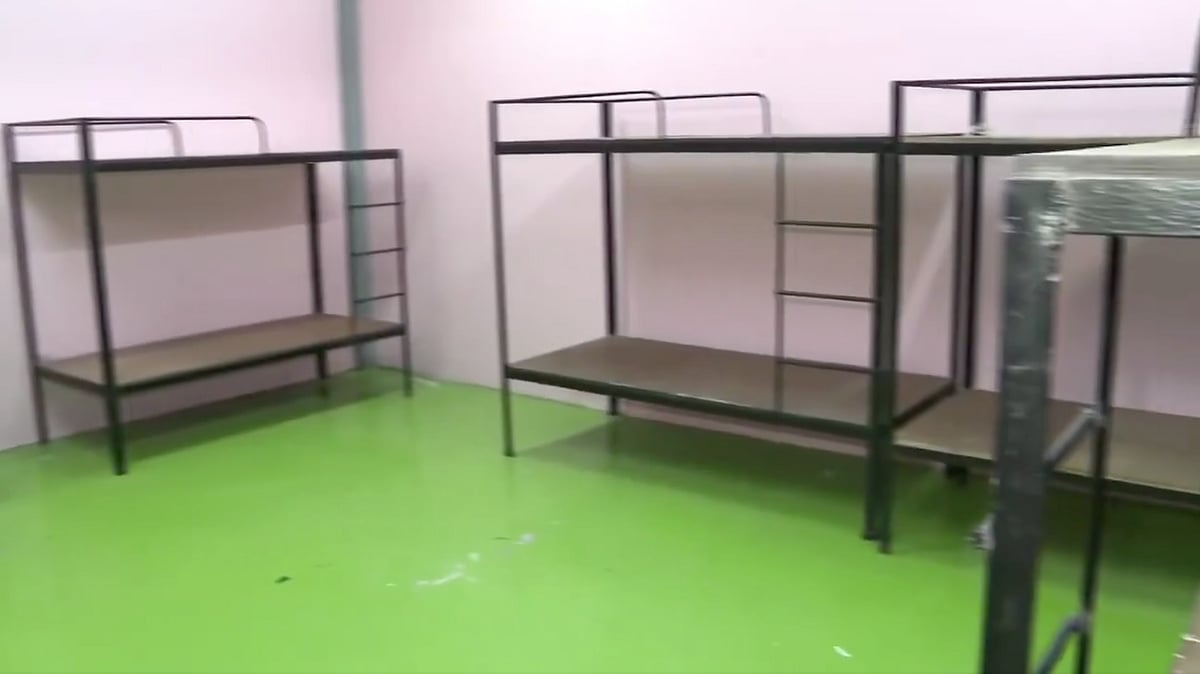No AC, no phones: Jail for corrupt officials, contractors now 'ready' in Manila
Announcement that detention cells are “ready” marks next step amid public outcry vs scams

Manila: With the Philippines emerging as the world's flood control scam capital, the Manila government faces a challenge: What to do with the indicted scammers.
The government says it knows and it's ready for the next logical step: detain public officials and private contractors indicted in the massive corruption probe related to sham flood defences.
A new 800-bed jail facility in Metro Manila has been prepared to receive dozens — possibly up to 200 — of suspects, officials here said.
Interior and Local Government Secretary Jonvic Remulla said the New Quezon City Jail in Payatas, Quezon City, can accommodate up to 800 detainees and is the detention facility closest to the "Sandiganbayan", the anti-graft court.
Key facilities inside the cells | dormitories
Each dormitory (room) is designed for 10 persons deprived of liberty (PDLs) and includes the following standard features:
| Facility/Item | Description/Details |
|---|---|
| Beds | Five double-deck bunk beds (accommodating 10 persons deprived of liberty [PDLs] total); comfortable and sufficient to prevent shared sleeping surfaces. |
| Bathroom/Sanitation | Shared facilities per room, including one sink (lababo), one toilet, and one shower; emphasis on cleanliness and privacy. |
| Drinking Water | Access to purified drinking water dispensers |
| Ventilation | Ceiling fans for air circulation (no air conditioning reported) |
| Lighting & Space | Well-lit rooms with adequate space to address overcrowding; no closets or personal storage mentioned |
| Prohibited Items | No cellphones, computers, or external communication gadgets; monitored to ensure security |
Contingency planning
Remulla and Palace officials have cited the new facility as part of contingency planning should the Department of Justice (DOJ) and the Ombudsman move to file large numbers of charges stemming from alleged anomalies in flood-control projects.
DOJ officials, meanwhile, have been building cases. In mid-October the DOJ said it had submitted collated fraud audit reports to the Ombudsman as part of a criminal case-building process and has identified dozens of individuals potentially facing charges.
Senior DOJ sources told reporters they expect multiple complaints to be filed, and have publicly estimated that as many as 200 persons could be implicated once filings proceed, according to local media.
Malacañang echoed those preparations, telling the public that the government stands ready to imprison anyone found guilty of corruption in connection with the flood-control projects.
Probe ongoing
Palace spokespeople cautioned that investigations remain ongoing.
The presidential palace spokesperson, also stated that some eventual charges may involve "bailable" offences, but emphasised that facilities and processes are in place to detain those who require custody, as per the Inquirer.
Local reporting has highlighted both logistical and symbolic dimensions of the readiness drive.
Journalists have noted authorities’ effort to stress that new detention capacity will apply equally to all suspects — from lower-level contractors to high-profile officials — and to counter perceptions of “VIP” treatment for powerful detainees.
At the same time, analysts and opinion writers cautioned that detention readiness does not guarantee swift convictions; complex graft cases typically move slowly through preliminary investigations and court proceedings.
Public scrutiny
The suspicion of large-scale corruption in flood-control projects has prompted intense public scrutiny and calls from business groups and civil-society organisations for accountability, asset recovery and reforms to procurement and oversight systems.
Government agencies say they are coordinating evidence gathering, asset tracing and case referral to the Ombudsman and Sandiganbayan while preparing detention logistics should indictments follow.
As investigations continue, Manila’s announcement that detention cells are “ready” signals a new phase: officials are preparing both the legal casework and the physical capacity to hold those accused — a practical step intended to show the public that the state is ready to follow through if prosecutors secure indictments and courts order preventive detention.
Additional on-site amenities
Beyond individual cells, the QCJMD provides communal and rehabilitative spaces to meet penological standards:
Laundry Area: Dedicated space for washing clothes.
Chapel: For religious services and spiritual support.
Visitation & Receiving Area: Regulated family visits; relatives can bring cooked food. Private cubicles (10 under construction) for lawyer-client consultations to protect legal rights.
Exercise & Recreation: Designated outdoor areas for sunlight exposure, physical exercise, and fresh air.
Medical & Health Services: On-site access to basic healthcare (though not detailed in room-specific reports); aligned with broader BJMP humanization efforts.
Overall Capacity: 80 unoccupied dorms, scalable to 800 PDLs; separate wings for males and females.
DILG Secretary Remulla highlighted that this setup ensures "no overcrowding" and serves as a model for modernizing all BJMP facilities, pending budget approval.
He noted that while the government prepares for detentions, courts ultimately decide placements—QCJMD is the nearest BJMP site to the Sandiganbayan (anti-graft court).
Sign up for the Daily Briefing
Get the latest news and updates straight to your inbox
Network Links
GN StoreDownload our app
© Al Nisr Publishing LLC 2025. All rights reserved.